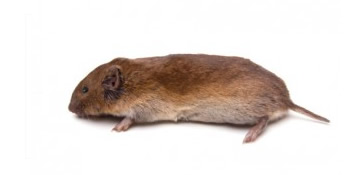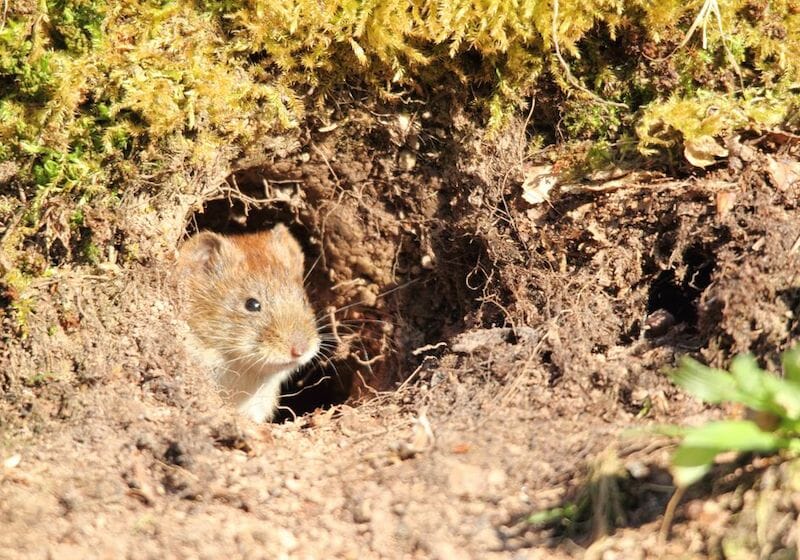Effective Vole Control Solutions: Secure Your Property Today!
Wiki Article
Mastering Vole Pest Control: In-depth Insights on Problem Prevention and Therapy Strategies
By recognizing the refined indicators of vole infestation early on, we can take positive measures to stop widespread damages. In this discussion, we will certainly explore the nuances of vole actions, dig right into the identification of problem signs, and uncover the most efficient avoidance and therapy approaches.Comprehending Vole Actions
Analyzing the foraging patterns of voles offers valuable understandings right into their actions and habitat choices. Voles, small rats looking like mice, are herbivores known for their underground tunneling tasks. By observing their foraging actions, scientists can obtain a much better understanding of where voles choose to establish their environments and the degree of their ecological effect. Voles are respected dog breeders, with a single women efficient in producing numerous trashes in a year, making it critical to comprehend their habits for reliable pest control methods.
Study shows that voles exhibit discerning feeding practices, preferring origins, seeds, and roots - vole control. This nutritional preference affects their foraging patterns, leading them to locations rich in vegetation and ground cover. In addition, voles are recognized to create intricate tunnel systems for foraging and nesting objectives, showing a high degree of flexibility to their environments
Comprehending vole behavior is crucial for implementing targeted bug control actions that disrupt their habitat choices and foraging activities. By researching their habits, experts can establish more effective avoidance and therapy methods to manage vole problems.
Identifying Indications of Vole Invasion
Vole infestations can be found by acknowledging specific indicators of their visibility in a location. Among the most typical indicators of a vole invasion is the visibility of surface area runways. Voles produce networks of narrow paths on the ground that are generally about 2 inches wide. These paths are frequently discovered in grassy areas or under compost or ground cover where voles can relocate freely and look for food.Another key indication of vole problem is the visibility of little burrow openings in the ground. Voles dig shallow burrow systems with multiple entrances and departures. These burrows function as shelter and nesting websites for the voles. In addition, voles are known to leave behind chewed plant stems, roots, and light bulbs near their burrow openings, indicating their feeding task in the location.
Moreover, vole droppings can likewise signify their visibility (vole control). Vole droppings are tiny, brownish, and round in form, looking like grains of rice. Finding these droppings along runways or near burrow openings can verify a vole infestation. By being cautious for these signs, homeowner can promptly address vole invasions and protect against further damages.
Applying Proactive Avoidance Procedures
To efficiently minimize the risks associated with vole problems, property proprietors can proactively execute a variety of preventative steps aimed at safeguarding their landscapes and gardens. Furthermore, maintaining garden areas clean and lessening mess visit this site where voles might conceal or nest is necessary in minimizing their presence.In addition, utilizing natural vole deterrents like castor oil-based repellents or predator pee can work as effective preventative procedures. It is likewise suggested to regularly examine outside rooms for any kind of indications of vole activity, such as paths or tunnel openings, to attend to possible invasions without delay. By adopting these proactive prevention strategies, property proprietors can substantially reduce the probability of vole damage and keep the health and wellness and aesthetics of their landscapes.
Reliable Therapy Methods
Including targeted capturing approaches and utilizing authorized rodenticides are necessary elements of reliable treatment strategies for taking care of vole invasions. Trapping can be an efficient way to lower vole populaces, especially when placed purposefully in their active runways. Snap catches and live catches can both be effective, with the last allowing for the capture and moving of voles. When using rodenticides, it is critical to adhere to security standards to stop injury to non-target animals and family pets. Area rodenticides in safe and secure bait stations to reduce dangers to unintentional targets. In addition, habitat alteration, such as reducing ground cover and eliminating sources of food, can assist prevent voles from infesting an area. Normal surveillance and upkeep are likewise key aspects of successful therapy strategies to make sure that vole populations are kept under control. By incorporating trapping, rodenticides, habitat modification, and consistent surveillance, effective vole insect control can be accomplished.
Monitoring and Maintenance Tips
Preserving an organized schedule for tracking and performing regular upkeep activities is crucial to maintain the performance of vole insect control actions. Regular monitoring Going Here enables the very early discovery of vole activity, allowing prompt treatment before invasions worsen. To efficiently check vole populaces, purposefully put traps can be utilized in vole paths or near burrow entries. By frequently inspecting these catches, homeowner can evaluate the degree of vole task and change control techniques appropriately.In addition, maintaining a neat and well-kept landscape is necessary in vole prevention. Cleaning away debris, such as stacks of timber or thick plants, removes potential vole habitats. On a regular basis trimming and trimming grass plant life assists minimize vole hiding spots and reduces their access to food resources.

Conclusion
To conclude, mastering vole pest control needs a solid understanding of vole habits, the ability to recognize signs of problem, carrying out positive prevention procedures, reliable therapy methods, and constant monitoring and maintenance. By taking a comprehensive technique to vole control, people can successfully take care of and prevent infestations, ultimately safeguarding their residential or commercial property and bordering environment from damage brought on by these small rats.In this discussion, we will explore the subtleties of vole behavior, delve into the identification of infestation indications, and discover the most reliable avoidance and therapy methods.Including targeted trapping approaches and making use of approved rodenticides are essential components of efficient treatment methods for handling vole infestations. To properly keep track of vole populaces, tactically put traps can be utilized in vole paths or near burrow entryways. Checking and repairing any type of damages to these structures ensures that vole control continues to be efficient in securing residential or commercial properties from invasions. By incorporating these surveillance and upkeep methods into a comprehensive vole insect control plan, individuals can properly take care of vole populations and safeguard their buildings from damage.
Report this wiki page